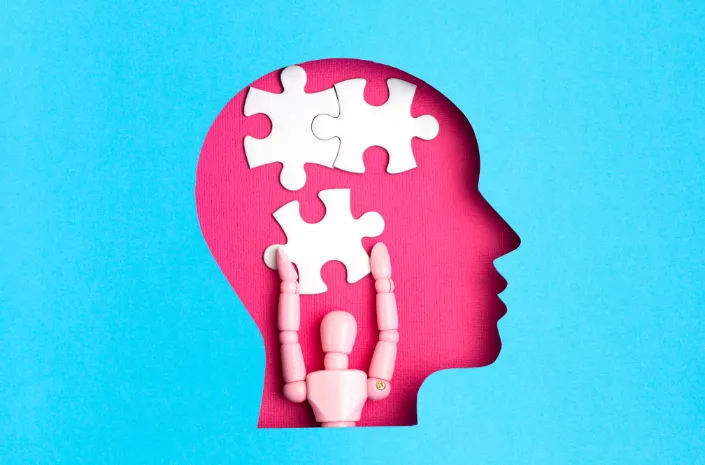
Psychotherapy, Mental Health Workshops
What is Cognitive Restructuring?

What is Cognitive Restructuring in CBT?
Cognitive restructuring is a key element in various forms of psychotherapy, especially Cognitive-Behavioral Therapy (CBT). It involves identifying and altering negative and harmful thought patterns to improve mental health and overall well-being. People often face challenging situations that can influence their thoughts, emotions, and behaviors. While occasional negative thoughts are normal, persistent patterns can harm mental health.
Other Names for Cognitive Restructuring
Cognitive restructuring is also known as cognitive reframing.
Example of Cognitive Restructuring
Imagine you notice your friends went out without you. Initially, you might think they dislike you, leading to feelings of sadness and rejection. However, upon evaluating the situation, you recall being included in many past events and receiving positive feedback from your friends. This reassessment helps you realize that your friends still value you, even if you aren't invited to every outing, resulting in a more positive emotional outcome.
Examples of Cognitive Distortions
Cognitive distortions are inaccurate, often negative thought patterns. Common distortions include:
Overgeneralization: Drawing broad conclusions from a single event (e.g., believing one failed relationship means all future relationships will fail).
Catastrophizing: Expecting the worst-case scenario (e.g., fearing financial ruin if a paycheck is delayed).
Personalization: Blaming oneself for events beyond one’s control (e.g., feeling responsible for a colleague’s bad mood).
Other distortions: All-or-nothing thinking, mind reading, mental filtering, discounting the positive, "should" statements, emotional reasoning, labeling.

How Cognitive Restructuring Works
Cognitive restructuring employs various techniques to challenge and change negative thought patterns, such as thought recording, decatastrophizing, disputing, and Socratic questioning.
Steps in Cognitive Restructuring
Identify the Situation: Write down the event causing distress.
Recognize Feelings: Note the emotions associated with the situation.
Identify Thoughts: Record thoughts underlying these emotions.
Evaluate Accuracy: Assess evidence supporting and contradicting these thoughts.
Develop Alternative Thoughts: Replace negative thoughts with more accurate, positive ones based on the evidence.
Goals of Cognitive Restructuring
The aim is to modify unhealthy thoughts and beliefs, thereby enhancing mental health and overall well-being.
Improving Cognitive Thinking
Cognitive thinking involves processing thoughts, knowledge, and experiences. To enhance cognitive thinking, one can reduce stress, practice mindfulness, meditate, exercise, get enough sleep, and engage in concept mapping.
Challenging Negative Thoughts
To challenge negative thoughts, identify and understand your thought patterns. Techniques include mindfulness, journaling, focusing on positive aspects, and seeking professional help.
Fixing Cognitive Distortions
Cognitive restructuring and reframing can correct cognitive distortions by replacing negative patterns with healthier ones.
Effectiveness of Cognitive Restructuring
Cognitive restructuring and CBT are effective for treating anxiety, depression, addiction, and other mental health issues. They are also beneficial for children and adolescents.

Reframing Concepts
Emotional Reframing: Changing the emotional impact of memories and feelings by viewing them differently.
Positive Reframing: Viewing negative situations in a more positive light, changing the perspective without altering the facts.
Alternative Terms for Reframing: Reworking, reexploring, reevaluating, rethinking.
Example of Reframing
Viewing problems as challenges can shift one’s perspective, turning feelings of helplessness into opportunities for growth and improvement.
Six-Step Reframing Process
Identify the thought or behavior to change.
Understand its purpose.
Find alternative ways to achieve the same outcome.
Create new thoughts and behaviors.
Take responsibility for these changes.
Regularly review and adjust.
Reframing Mindsets and Thoughts
To reframe a mindset, identify negative patterns and consider their accuracy. Develop alternative thoughts that reflect a more positive and realistic perspective.
Reframing Fearful and Bad Thoughts
Writing down thoughts can provide clarity. Evaluate the evidence for and against these thoughts, then replace them with healthier alternatives.
Reframing Experiences
By reframing negative experiences, you can change their emotional impact. Examine the experience thoroughly, identify negative thoughts, and replace them with more accurate and positive ones to improve your overall outlook.
As I continue to navigate the intricate dance of social work, family life, and creative expression, I am grateful for the diverse tapestry that has emerged. Each role I inhabit contributes to the vibrant mosaic of my identity, reminding me that the key to a fulfilling life lies in the delicate balance of compassion, creativity, and connection.
Reach Out
Currently Accepting the following Insurance Plans and Self Pay Rate: Aetna, Ambetter, Blue Cross Blue Shield Plans, Cigna, Self Pay $200, Medicare,
United Healthcare, Oscar Health, Oxford, Optum.
To get started, click the button below.
Thanks and looking forward to starting your therapeutic journey with you!
Get In Touch
Need to reach us? Shoot us and email or give us a call today.
Email: [email protected]
Phone: 4077389408
Sign up For Our Newsletter
Stay up to date
